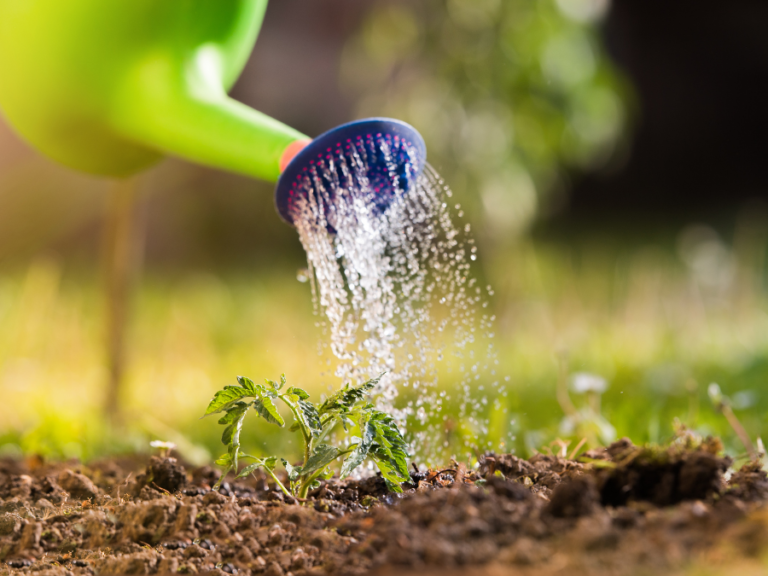Should You Install Fans To Help Ventilate Your Greenhouse?

Proper ventilation is the backbone of a healthy and productive greenhouse. Without it, plants can suffer from overheating, poor air circulation, and high humidity levels, leading to disease and stunted growth. But is installing fans the right solution for your greenhouse?
In this article, we’ll look at why ventilation matters, types of greenhouse fans, and greenhouse ventilation fan alternatives. Whether you’re new to greenhouse gardening or looking to upgrade your setup, this guide will help you decide if fans are a must-have for your greenhouse.
Should You Install Fans To Help Ventilate Your Greenhouse? Many greenhouses have to be vented to remove surplus amounts of heat and moisture. If you do not have a way to ventilate your greenhouse, you may begin to notice excess humidity, condensation and issues with your plant’s health. While smaller greenhouses can grow plants with only vents for cross-ventilation, having a fan system can help promote further air circulation and lead to improved plant growth.
Disclaimer: This article includes affiliate links. If you click one of them, we may receive a small percentage of the sale at no extra cost to you. Thank you for your support!
Benefits Of Ventilating Your Greenhouse With Fans
Temperature Regulation
Installing fans in your greenhouse will enable you to moderate the temperature of your growing space and its humidity levels. Doing this can help prevent a number of issues from occurring that are typically caused by exposure to excessive heat or cold.
It is important to ensure that the temperatures within your greenhouse are constant throughout. This is key to successful crop yields as it provides a stable environment, reducing the amount of stress on the plants.
In addition, temperatures that are too cold or hot will reduce the plant’s ability to photosynthesize. Without photosynthesis, plants are unable to produce their own food and energy, leading them to inhibit growth and eventually die.
Help Prevent Frost
If you live in a climate that is prone to frost, having a greenhouse with fans will come in handy to prevent any issues caused by cold conditions. Frost has a negative effect on plants as it causes damage to the tissues and inhibits growth.
As mentioned above, extreme cold conditions can lead plants to stop production and die off. While some hardy and semi-hardy plants can withstand some frost, there are many vegetable plants that cannot survive even a light frost or a cold snap.
Prevention Of Mould And Fungi Growth
If you find that you are having issues with mould and fungi in your greenhouse, chances are there is too much moisture in the air and soil. It is common for unventilated greenhouses to create excessive moisture due to hot and humid temperatures. And, as many gardeners know, excessive water can cause your plants to form mould and fungi. These can be harmful to your plants after prolonged exposure as they may inhibit the growth of your plants and, in extreme cases, kill your crops.
If you notice fungi or mould on your plants, rest assured that most types can be treated, leaving your plants relatively unharmed. However, it is still best to try and prevent this from happening in the first place.
This is where fan ventilations will come in handy. Having fans in your greenhouse can help the temperatures stay in an ideal condition while also providing enough airflow to prevent the likeliness of mould and other fungi.
Aids In Pollination
Greenhouses are fantastic for protecting your plants from potentially harmful elements such as weather, temperature and critters. However, they also limit the essential natural elements that help your plants grow, such as wind and insect pollinators.
The wind is needed to help carry pollen grains from the anther (where pollen is produced) to the stigma (where pollen is received). This is essential for self-pollinating plants like tomatoes and potatoes. If you notice that your plants are flowering and then falling off rather than fruiting, then there is a good chance your greenhouse may be lacking air circulation and pollination.
While there are ways to pollinate plants manually, if you have a larger greenhouse, manual pollination may take up quite a bit of your time. Instead, you can use fans to mimic wind, letting your plants pollinate themselves, so you have more time to attend to other gardening needs.
Pest Control
Insects can easily become a nuisance in greenhouses that are not properly ventilated. Pests are not only annoying but can also destroy and eat away your plants to the point of no return if left untreated for longer periods of time.
Insects such as gnats can be pesky critters to get rid of as they quickly spread and thrive in unventilated greenhouses. As previously mentioned, using a fan system will help control the moisture levels and humidity in your greenhouse resulting in a decreased chance of attracting moisture-loving insects.
Another bonus of fans in a greenhouse is that most flying insects do not like flying into air currents. Therefore, it may help deter pests by having air push through your greenhouse.
Greenhouse Ventilation System Needs
There are certain requirements common to all greenhouse ventilation systems in order to ensure proper functionality.
Proper Sizing For Vents And Fans
Before installing a greenhouse ventilation system and fans, it is important to make sure you get the right size vents and fans based on the greenhouse size. If the vents and fans are too big or too small, they may not be able to provide efficient ventilation.
Proper sizing for vents and fans is critical because it allows the airflow to be distributed efficiently throughout your growing environment. This will help to keep your greenhouse working at optimal capacity for as long as possible.
Proper System Operation
To make sure that your ventilation system is functioning properly, you should check the operation of your vents and fans on a regular basis to ensure they are working effectively. Checking the functionality of your ventilation system should be done on a regular basis for the overall health and upkeep of your plants.
In addition, be sure to regularly check the temperature of the greenhouse. As previously mentioned, maintaining the temperature within a greenhouse is crucial for proper crop growth.
Ensure An Adequate Source Of Fresh Air
If you’re venturing into the world of greenhouse ventilation, you’ll need to make sure that you have an adequate source of fresh air in your growing environment. You may also want to consider opening up doors and windows occasionally or installing vents so that your plants always have a source of fresh air.
Types Of Greenhouse Fans
There are numerous fans on the market to choose from. Here are the top five most common types of greenhouse fans.
1. Circulation Fans
Circulation fans help move air circulation throughout a greenhouse. They also work to provide a uniform temperature to reduce heat stress and condensation.
2. Hanging Fans
Hanging fans are great for creating cross-breeze and circulating hot air that gets trapped at the top of a greenhouse. These fans can help create a recycled flow of air within your greenhouse.
3. Exhaust Fans
Exhaust fans help remove stagnant air from a greenhouse and provide ventilation for a better quality growing environment.
4. Temperature Control Fans
Temperature control fans, or automatic fans, are arguably the most expensive and high-tech option. They work by measuring the temperature of your greenhouse and turning ventilators on or off when needed to regulate and maintain ideal growing conditions.
5. Floor Fans
Another type of fan you’ll want to consider in your ventilation system is a floor fan. These work great and are quite easy to set up. Floor fans help with air circulation and moisture control.
Greenhouse Ventilation Fan Alternatives
While installing a ventilation fan system is a great way to promote air circulation in your greenhouse, there are a few alternative ventilation system options that we think are worth mentioning.
Solar Ventilation
Solar ventilation is a great alternative to traditional ventilation practices and makes for an eco-friendly way to ventilate your greenhouse. Solar ventilation systems such as the Eco-Worthy Solar Ventilator use heat and the power of the sun to provide energy to the fan.
Systems that use solar panels for energy are relatively easy to use and do not need a household power supply to work. Thus, ensuring that your ventilation system will work year-round and not be affected by things such as power outages or electrical failures. This will help provide proper growth within your greenhouse with minimal input on your part.
Natural Ventilation
Natural ventilation is a great way to naturally cool your greenhouse, and it’s one of the most recommended methods of greenhouse ventilation for beginners. If you are new to maintaining a greenhouse, this is an inexpensive method that is easy to install into a greenhouse of any size.
Similar to solar ventilation systems, natural ventilation will help to promote airflow within your greenhouse without any additional input from you (after installation), making it an excellent option for greenhouse newbies.
To set up natural ventilation, install a vent either near or on the greenhouse roof and a few vents along the walls. The amount needed will vary based on the size of your greenhouse. The way it works is new air will come through the sidewall vents, and as it heats up, the hot air will rise to the top of the greenhouse and leave through the roof vents.
Final Thoughts
Having any type of air circulation and ventilation within your greenhouse is beneficial to your plant’s health and growth. Fan ventilation is also an excellent way to control, regulate, and maintain humidity levels and temperatures within a greenhouse.
There are many different types of greenhouse ventilation systems that can be used for growing plants. However, it is important that you select fans and vents that are the correct size for your growing environment to ensure appropriate airflow.






